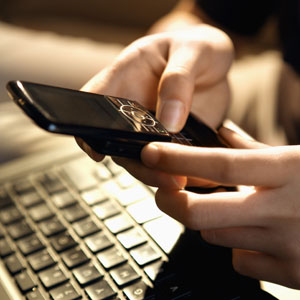It’s great now days, isn’t it?
You carry around devices with you that can do just about anything! You can get on the Internet and check your email, do your banking, find out what is new on Facebook, send a Tweet or a million other things. You can also take a picture, record a conversation, make a movie or store your work papers – and the storage space is virtually unlimited! And all this is just great as long as you understand what kind of risks this freedom poses to your privacy.
Remember that much of this stuff is getting stored on the cloud, and the only thing that separates your stuff from the general public is a user name, password and sometimes a security question. Just recently, a number of celebrities have complained that their photos (some of them explicit) have been stolen by hackers. These photos were stored in iCloud digital vaults, and were really very well defended by Apple security measures. But Apple wasn’t at fault here – it turns out that the celebrities themselves revealed the means to access their private stuff.
It’s called Phishing, and there are a million types of bait being used out there to fool or entice you. By clicking on a link in an innocent-looking email or answering a few simple questions, you can give away the keys to the kingdom. And even if you realize your mistake a couple of hours later, it is probably already too late to do anything about it. That naughty movie you made with your spouse during your romantic visit to Niagara Falls is already available from Peking to Panama!
Apple announced that they will soon start sending people alerts when attempts are made to change passwords, restore iCloud data to new devices or when someone logs in for the first time from new Apple devices. These are valuable controls, but really are only detective in nature and won’t actually prevent many data losses. That is why we recommend giving yourselves some real protection.
First, you should ensure that you educate yourself and your family about the dangers hackers and social engineers pose, and the techniques they use to get at your stuff. Second, it is really a lot better to store important or sensitive data on local devices if possible. But, if you must store your private data in the cloud, be sure it is well encrypted. Best of all, use some sort of good multi-part authentication technique to protect your stuff from being accessed easily by hackers. By that I mean something like a digital certificate or an RSA hard token – something you have or something you are, not just something you know.
If you do these things, then it’s a good bet your “special moments” won’t end up in your Momma’s inbox!
Thanks to John Davis for this post.





